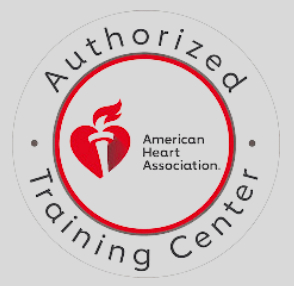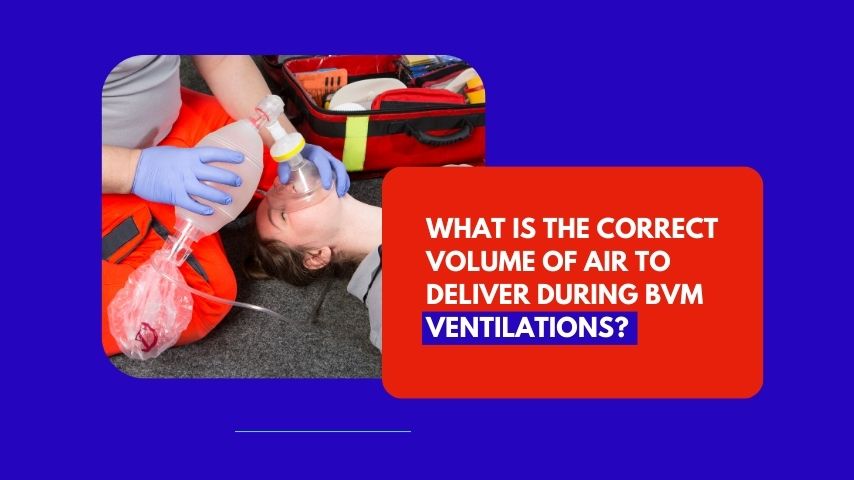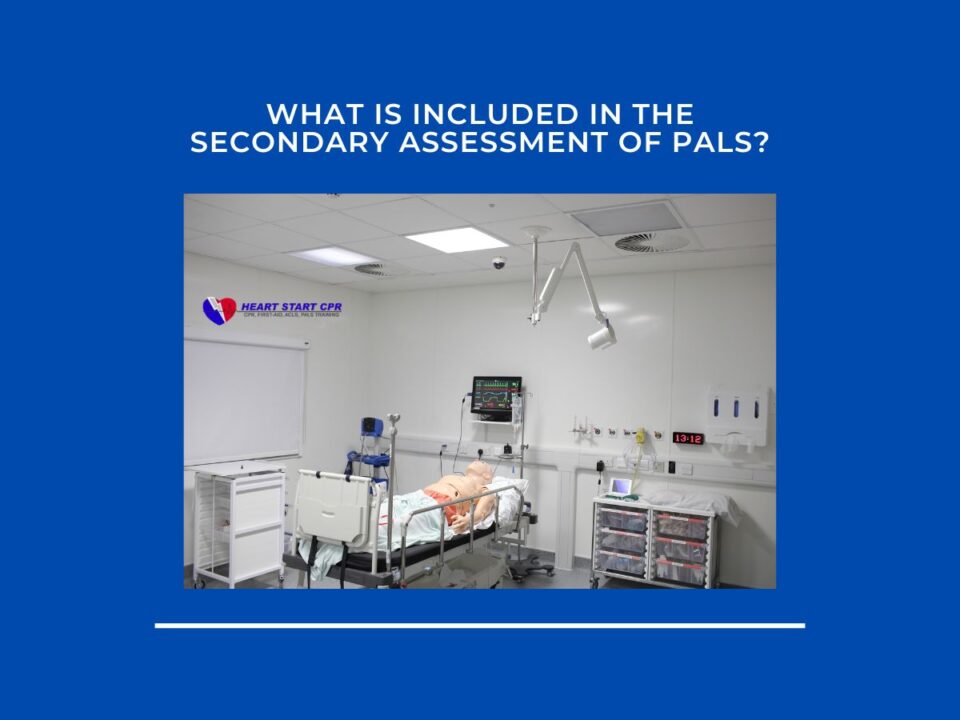
Can Heart Failure Be Reversed?
May 15, 2024
BLS vs CPR- What’s the Difference?
May 23, 2024Table of contents
BVM ventilation, or Bag-Valve-Mask ventilation, is a manual technique used to provide artificial ventilation to patients who are unable to breathe adequately on their own. It involves the use of a self-inflating bag, a face mask, and a one-way valve system to deliver breaths to the patient’s lungs.
BVM ventilation is commonly employed during cardiopulmonary resuscitation (CPR), in emergency medical settings, and in situations where mechanical ventilation is unavailable or not feasible. This technique allows rescuers to manually inflate the patient’s lungs with oxygen-rich air, supporting gas exchange and maintaining vital organ function. Understanding the correct volume of air to deliver during BVM is crucial for effective patient care.
Importance of Proper BVM Ventilation Technique
Proper Bag-Valve-Mask (BVM) ventilation technique is crucial for effective respiratory support in critical situations like cardiac arrest. BVM ventilation helps patients who can’t breathe enough on their own, like during CPR or emergencies, by manually giving them breaths. A correct technique ensures optimal oxygenation and proper ventilation of the patient’s lungs, which is vital for maintaining vital organ function and improving patient outcomes.
Healthcare providers need to be skilled in BVM ventilation techniques to deliver the correct amount of air with each bag squeeze, reducing the chance of problems like excessive pressure and ensuring effective chest compressions. Techniques such as jaw thrust and head tilt chin lift may be employed to open the airway before BVM ventilation. By mastering proper BVM ventilation techniques, healthcare providers can enhance patient care and increase the likelihood of successful resuscitation in critical situations.
Let’s Understand Tidal Volume
In BVM ventilation, tidal volume refers to the volume of air delivered to the patient’s lungs with each compression of the bag. Tidal volume plays a crucial role in refilling oxygen and removing carbon dioxide from the lungs. It supports gas exchange and maintains vital organ function. Adequate tidal volume delivery ensures that vital organs receive sufficient oxygenation to sustain their functioning even in critical situations.
Healthcare providers monitor tidal volume during BVM ventilation to assess the effectiveness of ventilation and make necessary adjustments to optimize patient care. Additionally, proper tidal volume delivery helps prevent complications such as respiratory failure, respiratory acidosis or inadequate oxygenation, which can significantly impact patient outcomes. By understanding the significance of tidal volume in BVM ventilation, healthcare providers can ensure that patients receive optimal respiratory support, enhancing their chances of recovery.
How Do We Determine the Right Tidal Volume for CPR Ventilation?
To determine the correct tidal volume for CPR ventilation it involves a multifaceted approach. Factors such as the patient’s age, size, and medical condition affect the amount of air required for effective ventilation. Similarly, consulting established CPR guidelines and protocols is essential, as they offer recommendations for tidal volume based on patient demographics and clinical presentation. You also need to continuously monitor the patient’s respiratory status and response to ventilation efforts to make adjustments to tidal volume delivery as needed.
Additionally, rescuers need to be prepared to adapt tidal volume delivery based on the specific circumstances of the CPR situation, considering factors such as the presence of bystanders, equipment availability, and rescuer experience level. By following these steps, rescuers can make sure they are giving just the right amount of tidal volume delivery during CPR ventilation, improving the chances of successful resuscitation.
What is the correct volume of air to deliver during BVM?
The correct volume of air to deliver with a Bag-Valve-Mask (BVM) ventilation device depends on several factors. As we discussed before, you need to consider a few things about the patient, such as their age, size, and overall health condition. This ensures you are delivering the right amount of air effectively, including monitoring the bag valve mask ventilation rate during BVM ventilation.
Generally, the recommended and correct volume of air to deliver during BVM ventilation in adults is 500 to 600 milliliters.
For pediatric patients, there is a separate guideline for tidal volumes. Pediatric patients require a smaller volume. Infants under 1-year-old need 20-30 milliliters per kilogram of body weight, whereas children from 1 to 8 years of age require 10-15 milliliters per kilogram.
On the other hand, adolescents need the same air volume as adults for BVM Ventilations.
Also Read: How Are Breaths Delivered Using A Bag-Mask Device
What are the Risks of Incorrect Volume During BVM Ventilations?
When you deliver an incorrect volume of air during BVM (Bag-Valve-Mask) ventilations, it can lead to several serious complications. Hyperventilation happens when too much air is delivered, causing a drop in carbon dioxide levels. This can lead to respiratory alkalosis, reduce blood flow to the brain, and increase pressure inside the chest, which can harm the heart’s pumping ability.
On the other hand, hypoventilation—when too little air is delivered means the body doesn’t get enough oxygen. This can lead to hypoxia (low oxygen levels) and respiratory acidosis.
Another risk is gastric insufflation, where air ends up in the stomach instead of the lungs. This not only increases the chances of vomiting and inhaling stomach contents (aspiration), which can cause severe lung infection but also damages the lungs themselves. Excessive air pressure can cause barotrauma, injuring the lungs and potentially causing conditions like pneumothorax (collapsed lung). That’s why it’s so crucial to get the ventilation volume just right.
What are the Best Techniques for Correct Volume Delivery During BVM Ventilations?
To achieve correct volume delivery during BVM ventilations, techniques like the one-handed and two-handed methods are very effective.
One-Handed Technique:
- This techniques involves using one hand to hold the mask and create a seal over the patient’s face.
- The other hand is used to squeeze the bag to deliver air.
- One-Handed Technique offers flexibility and control, suitable for single caregiver scenarios.
Two-Handed Technique:
- This method requires two caregivers: one holds the mask to maintain a secure seal.
- The other squeezes the bag to deliver consistent volumes of air.
- Two-Handed Technique ensures stable ventilation, particularly useful in critical situations.
Both approaches emphasize how crucial it is to keep a tight seal over the patient’s face. This ensures that air is delivered reliably and effectively into the lungs, which is essential for providing the right amount of oxygen needed for the patient’s breathing.
People Also Ask
What is the flow rate of BVM mask?
The flow rate during BVM ventilation typically ranges from 10 to 15 liters per minute (L/min) when using an oxygen reservoir bag to ensure adequate oxygenation.
How would you know if you are delivering appropriate volumes with each ventilation?
You can check if you are performing ventilation correctly by observing chest rise and fall, listening for breath sounds, and monitoring the patient’s oxygen saturation levels and end-tidal carbon dioxide (EtCO2) levels if available.
How often do you give breaths with BVM?
The frequency of breaths given with a BVM depends on the patient’s condition and clinical guidelines. In most cases of adult BVM ventilation during CPR, ventilations are typically delivered at a rate of 10 to 12 breaths per minute (every 5 to 6 seconds).
What is the average volume that you should give while ventilating a patient using a BVM?
The average tidal volume delivered during BVM ventilation is approximately 500 to 600 milliliters (mL) for an adult. This volume may vary based on patient size and condition.






